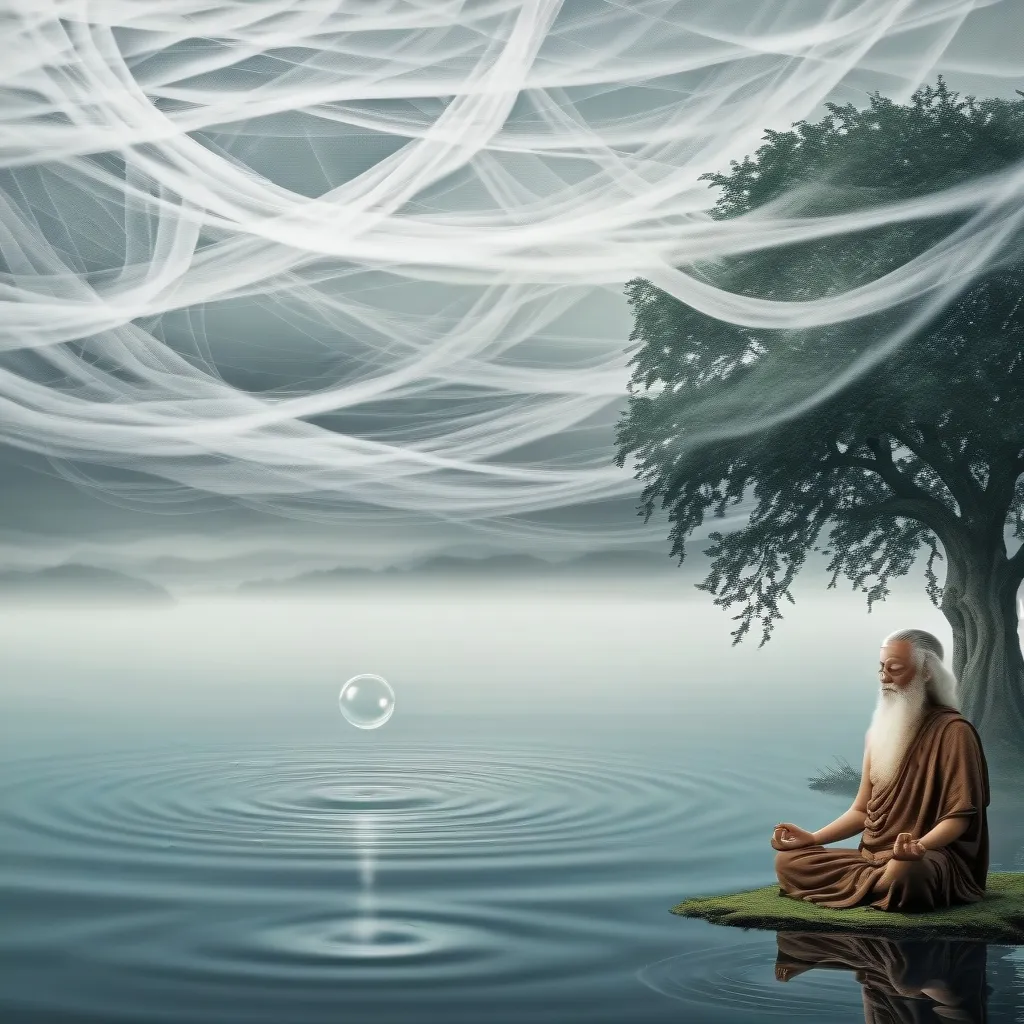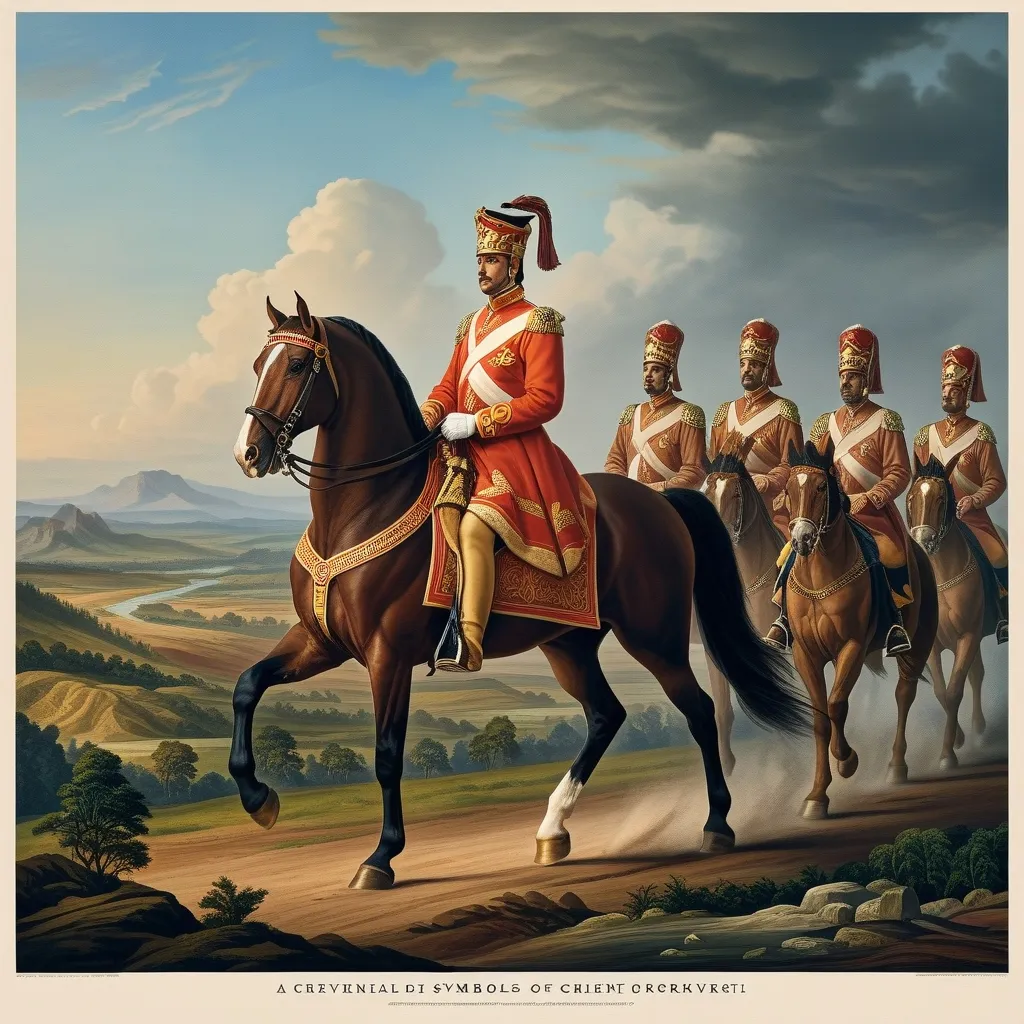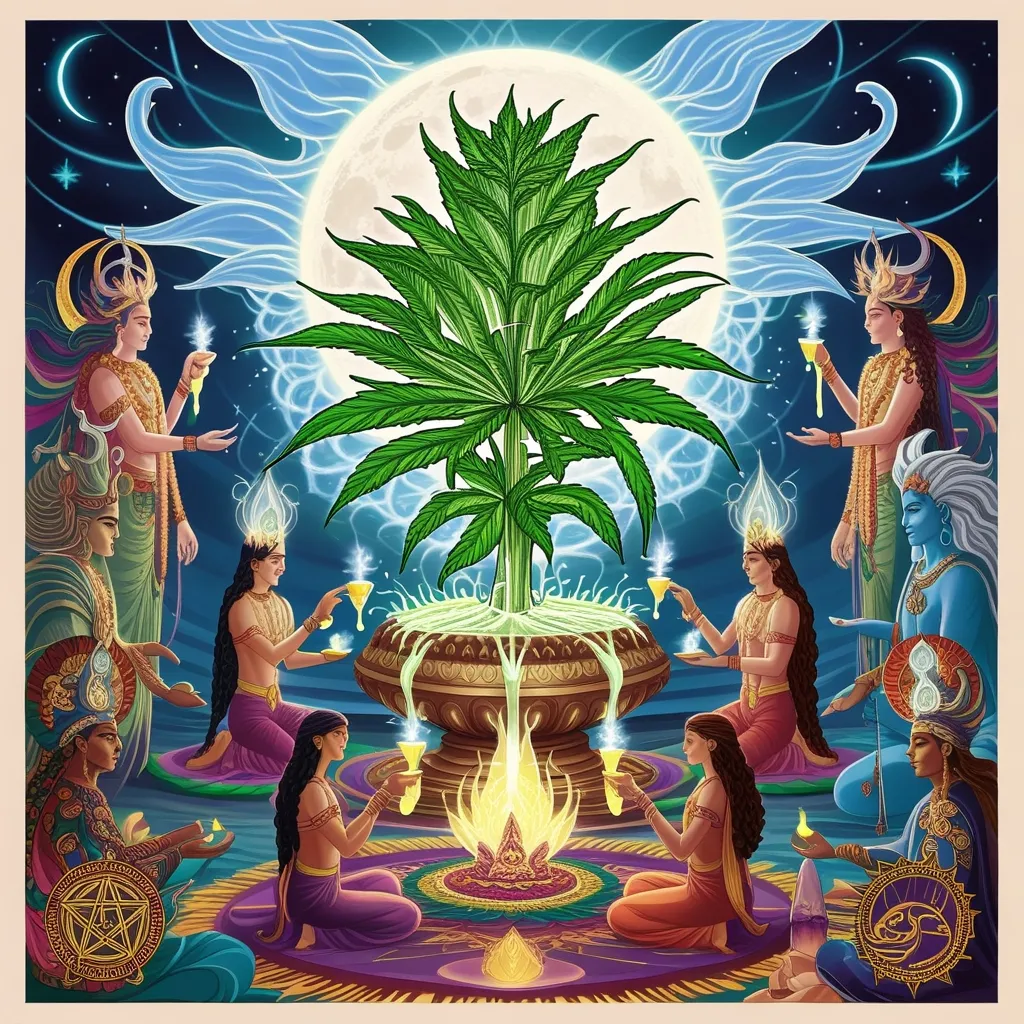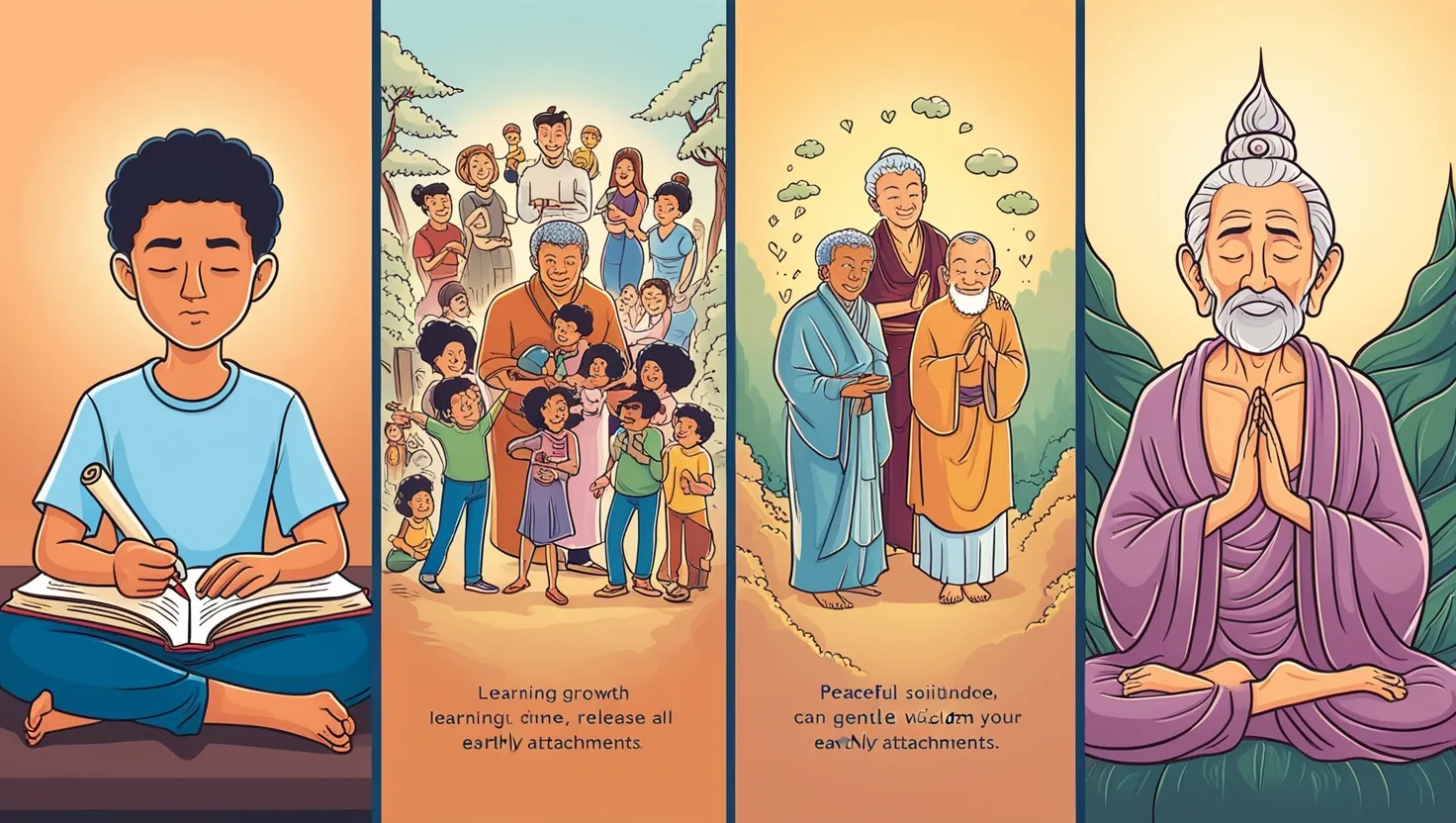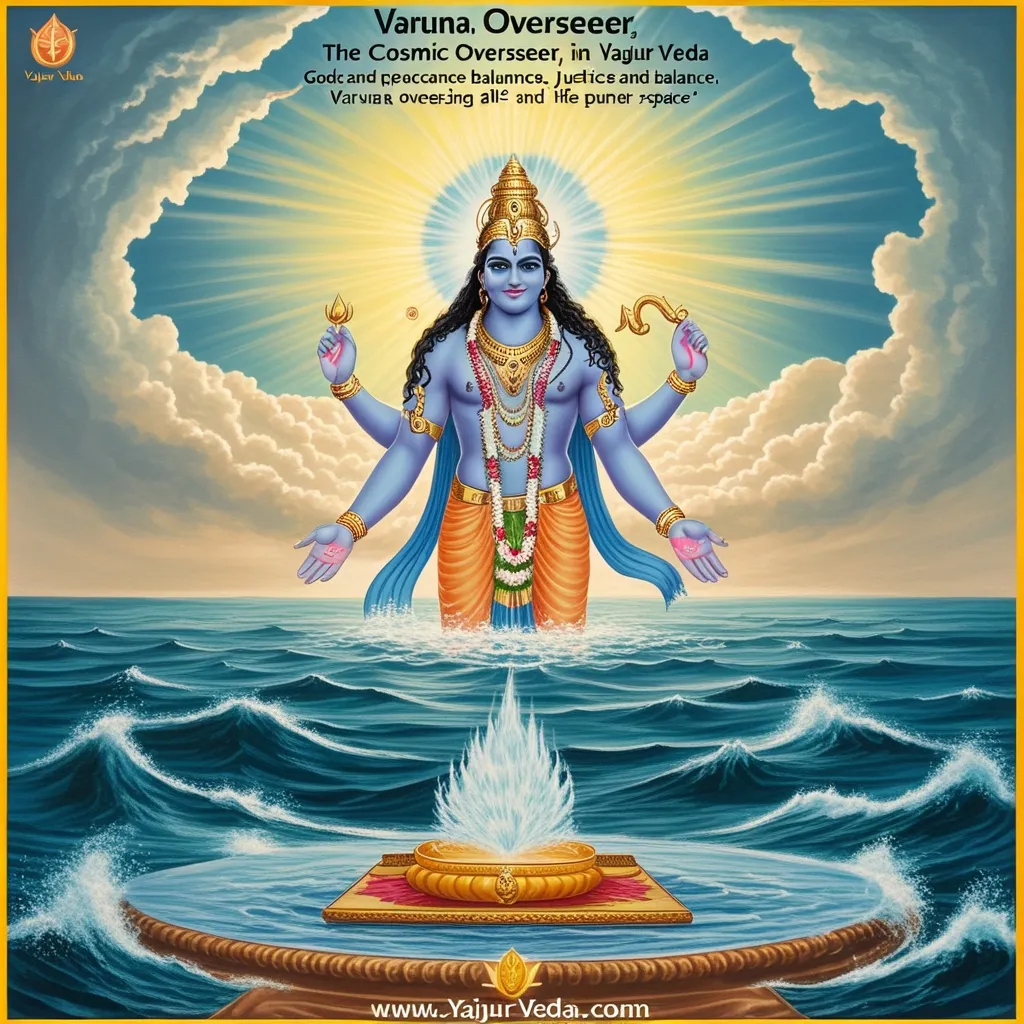The Isha Upanishad, snugly nestled within the Yajur Veda, is like this tiny package brimming with colossal insights about the self and the universe. Even though it’s made up of just 18 verses, it’s often considered the granddaddy of Upanishads. Let’s dive into what makes it tick, and why its messages are still profoundly relevant.
A Whirlwind Tour of Unity
The Isha Upanishad kicks off with a bombshell: “That is full; this is full. From fullness, fullness comes out. Taking fullness from fullness, what remains is fullness.” This sets the stage for the idea that everything in the super-complex universe is totally interconnected. Imagine the universe and ourselves as a huge puzzle where each piece is inseparable from the whole. At the center of this puzzle is Brahman, the invisible essence that is everywhere, like an all-encompassing mist from which everything else springs up.
We’re All in This Together
One of the coolest things about the Isha Upanishad is how it tells us that the split we often see between things—like me and you, or this and that—is pretty much an illusion. It’s like saying the world we see is just a bubble on the surface of water. The bubble seems separate for a bit but is actually just water all along. To get to the crux of things, we’ve got to recognize the Atman—the self that’s unchanging, ever-present, and real as heck.
Karma vs. Dharma: The Eternal Tug-of-War
Now, the Upanishad touches on an age-old debate: action versus knowledge. We all have our duties to perform, right? Whether you’re hustling at work or caring for family, that’s your dharma. But the Upanishad warns: don’t get so bogged down with these that you forget to understand your deeper self. If you get lost in just doing things without realizing the essence of who you are, you’re kind of tripping over your own feet in the dark.
Finding Bliss in Letting Go
Here’s another hit from the Isha Upanishad: “renounce and enjoy.” Wait, that sounds weird, right? But it’s actually saying that to truly enjoy life, you need to let go of the false, fleeting stuff. Imagine diving headfirst into a pool—when you let go, you really experience the water. That’s how it is with life. When you stop clinging to temporary things and recognize the underlying reality, life becomes this beautiful, liberating swim.
Street Smarts and Book Smarts: Why Both Matter
The Upanishad gives a nifty differentiation between Vidya (real, spiritual wisdom) and Avidya (worldly, empirical knowledge). It says you need both to really nail this human experience. Knowing about material stuff is important—it helps you deal with everyday life. But spiritual wisdom is the key to kickstart your journey towards liberation, freeing you from fears and sorrows.
Unlocking the Door to Liberation
If liberation is your jam, the key according to the Isha Upanishad lies in seeing the Atman in everyone and everything. When you get that everything and everyone is essentially an expression of the same divine essence, it’s a game-changer. You rise above petty egos and live in a state of unity and bliss. That’s legit freedom, and it cuts through all the superficial nonsense.
The Power of Knowing Yourself
The big cheese here is self-knowledge. The Atman is described as this thing that’s faster than the wind yet totally calm, closer than your breath yet infinitely distant. Wrapping your head around this means looking deep into your own consciousness, past all the layers of body and mind, to find something eternal and unchanging. This is the real you, the core that’s pure and endless.
It’s All in the Balance
Living life according to the Isha Upanishad is like walking a tightrope. You’ve got to do your societal and personal duties without going overboard. Extreme behavior in any direction—be it indulgence or asceticism—is a no-go. By striking a balance, you cultivate a peaceful mind that’s ready to grasp the highest truths.
Shaping Hindu Philosophy
Talk about influence—the Isha Upanishad has shaped a ton of stuff in Hindu philosophy, especially in Vedanta. Its ideas are a kind of reference point that both dualistic (Dvaita) and non-dualistic (Advaita) schools of thought grapple with. The stress on the unity of existence and the imperative of self-knowledge have led to all kinds of deep, thoughtful practices and discussions.
Modern Vibes
Despite being ancient texts, the teachings of the Isha Upanishad still resonate today like a timeless tune. They provide a unique perspective on reality that can help us find our place in the world and reach a state of inner calm. The focus on self-discovery, interconnectedness, and a mix of material and spiritual pursuits offers a roadmap for leading a meaningful, fulfilling life.
Through the lens of the Isha Upanishad, the essence of the self and universe gets explored, offering a treasure trove of wisdom on unity, self-knowledge, and balanced living. It serves as an ageless guide for anyone seeking to understand ultimate reality and walk the path towards liberation and inner peace.
